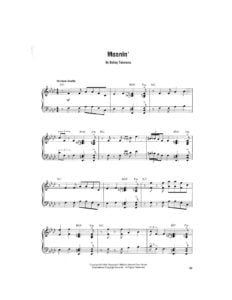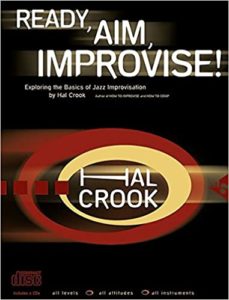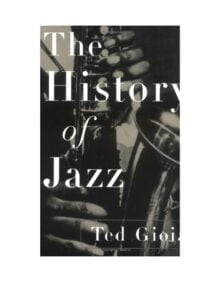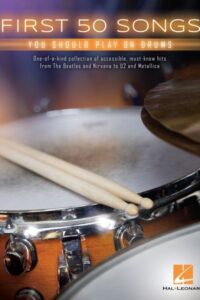Table of Contents
Bobby Timmons: Moanin’ – Art Blakey & the Jazz Messengers – Live
“We sincerely hope you buy our record. God knows we need the money”
Personnel:
Drums: Art Blakey
Trumpet: Lee Morgan
Tenor Sax: Benny Golson
Piano: Bobby Timmons
Bass: Jymie Merritt.
In the history of jazz, few bands were as long-lived or highly regarded as Art Blakey’s Jazz Messengers, and none have rivaled the now-legendary ensemble as an incubator of young talent destined for stardom.
Best Sheet Music download from our Library.
Though originally founded in 1954 as a collaborative effort by both drummer Art Blakey and pianist Horace Silver, the Jazz Messengers became a sole proprietorship under Blakey following Silver’s departure in 1956, and recorded a string of albums for various labels with a lineup dubbed the “Second Messengers” featuring trumpeter Bill Hardiman, pianist Sam Dockery, bassist Jimmy “Spanky” DeBrest, and either Jackie McLean or Johnny Griffin on saxophone.

After a break of over a year, Blakey wanted to explore with a new crop of musicians, and started fresh with a quintet made up of Philadelphia natives: trumpeter Lee Morgan, tenor saxophonist Benny Golson, pianist Bobby Timmons, and bassist Jymie Merritt. Their first album together marked Blakey’s return to Blue Note, and stands as a highlight of not only the drummer’s oeuvre, but of small group jazz in general. Recorded in a single session at engineer Rudy Van Gelder’s Hackensack, New Jersey studio on October 30, 1958, Art Blakey and the Jazz Messengers (more commonly called Moanin’) is one of those rare confluences of musicians and material that yields a result greater than the sum of its parts.

Beyond the blues stomp of Bobby Timmons’ title tune, Moanin’ boasts the first appearance of tunes composed by Golson that remain staples today including “Are You Real,” “Along Came Betty,” and “Blues March.” A drum-centric Blakey piece, “The Drum Thunder Suite,” and a take on Arlen and Mercer’s “Come Rain or Come Shine” completes the set.
Please, subscribe to our Library.
If you are already a subscriber, please, check our NEW SCORES’ page every month for new sheet music. THANK YOU!
The first onstage school of jazz ultimately opened for long-term session with drummer Art Blakey who enlisted young players to his revolving-door group, the Jazz Messengers, not only to teach but also to continually refresh himself and his band with new energy, excitement and especially repertoire. (During a 1954 live session, At Night at Birdland, Blakey remarked during the set: “I’m gonna stay with the youngsters. When these get too old I’ll get some younger ones. Keeps the mind active.”) The Messengers was co-founded in the early ‘50s by Blakey and pianist/talented songwriter Horace Silver, who bowed out in 1956 to pursue his solo career.

Throughout its existence, the Messengers served as the proving ground for dozens of greats, from tenor saxophonist Hank Mobley to trumpeter Wynton Marsalis. A select sampling of impressive musicians who learned at the feet of the bass drum and elevated at the high hat of Blakey: pianists Wynton Kelly, Keith Jarrett, John Hicks, Cedar Walton, James Williams, Benny Green; saxophonists Jackie McLean, Lou Donaldson, Gary Bartz, Johnny Griffin, Branford Marsalis, Donald Harrison, Bobby Watson, Kenny Garrett; trumpeters Clifford Brown, Woody Shaw, Freddie Hubbard, Donald Byrd, Terence Blanchard; bassists Wilbur Ware, Reggie Workman, Doug Watkins; guitarists Bobby Broom, Kevin Eubanks. Quite a crew.
Blakey had an uncanny sense of bringing fresh-to-town artists who made their marks on the Messengers as rising stars, who then left for greener pastures—which was fine with the leader because that’s how the in-and-out personnel policy of the group worked. School 24/7, grinding tours, playing to top form with no slouching, then graduation and hopefully onward and upward.

One of the greats that Blakey mentored was tenor saxophonist Wayne Shorter, who in the late ‘50s to early ‘60s became the music director of the band and primary composer. He delivered several new songs to the Messengers set list, including “Chess Players,” “Lester Left Town,” “Children of the Night,” “Ping-Pong” “On the Ginza” and “Mr. Jin” among many others. After five years (a long term) with Blakey, Shorter jumped ship and joined Miles Davis’s soon-to-be-classic quintet.
Shorter’s work gave new life to Blakey’s band, but perhaps the longest-lasting batch of compositions that were released on the Messengers’ 1958 classic, Moanin’. The album stands as one of jazz’s all-time recordings, largely because of its tunes, including the hip and swinging “Moanin’” by 22-year-old pianist Bobby Timmons’ that opens the date and four songs by 29-year-old musical director and tenor saxophonist Benny Golson: the relaxed “Along Came Betty,” “Blues March” (complete with Blakey’s military drum beat opening the number), the lyrical “Are You Real?” and the powerful “The Drum Thunder Suite.” A hard-bop cover of the Harold Arlen and Johnny Mercer tune “Come Rain or Come Shine” closes the six-pack. Quintet personnel on the date also includes very young trumpeter Lee Morgan (soon to be a huge Blue Note star in his own right) and bassist Jymie Merritt.
“Moanin,’” “Along Came Betty,” “Blues March” and “Are You Real?” are all played to perfection by the band and not only deservedly became integral to Blakey’s songbook, but have also found their place in the jazz canon. However, often overlooked is the compelling three-movement drum piece Golson wrote for Blakey who stars with gusto. “The Drum Thunder Suite” opens with mallet thunder with the horns driving the storm, continues with the Latin-tinged middle section and the closing funky melody that features Morgan on a clarion trumpet solo.
It’s rare that a jazz album—let alone a pop album—includes so many “hits.” That’s what Blakey accomplishes on Moanin’ with ease, swing and rumble.

«Moanin», Art Blakey and the Jazz Messengers» (by Bobby Timmons)
In jazz history, there are no batteries that run groups or orchestras; Even less, those who have printed their seal in a style. This is the case of Art Blakey, one of the most prominent leaders of the Hardbop movement than in the mid -twentieth century, put the accent of his music in the black roots of the blues and resumed the contributions made to Jazz a decade before by the boppers.
Since 1954, his “Messengers Jazz” with an extraordinary and unrepeatable quintet formed: Clifford Brown to the trumpet; Lou Donaldson to the Tenor saxo; Horace Silver to the piano and the bassist, Curly Russell (the famous formation he recorded in the Birdland) went to his physical disappearance, one of the most stable jazz groups in the history of jazz. Conceived as a cooperative, under the direction of the percussionist, innumerable musicians who had their career in the Messengers their musical learning. The list of musicians covers a good part of the history of modern jazz and for highlighting some, there they touched: Kenny Dorham; Donald Byrd; Lee Morgan; Freddie Hubbard; Wynton Marsalis; Hank Mobley; Jackie McLean; Johnny Griffin; Benny Gating, Wayne Shorter; Curtis Fuller; Horace Silver; Bobby Timmons; Cedar Walton; Keith Jarrett or Chick Korea among more than a hundred great instrumentalists.
Art Blakey was in its beginnings very marked by the influence of drummers from swing: Chick Weeb or Cozy Cole, but his two years of stay in Africa, where he became Islam adopting the name of Abdullah Ibn Buhaina, changed the style incorporating African procedures that gave it an absolutely original polyrhythmic sound. His impressive redouble redouble The patches to modify the bell, the blows on the side of the battery, or on the hoops and patches of the box are some of the resources of a battery whose Africanism and primitivism was progressively sophisticated in a permanent complicity with the musicians he accompanied.

This Messengers album collects one of the best groups led by the great drummer. In the group the function of musical director the extraordinary Saxophonist Alto, Benny Gatson (previously Horace Silver was, and subsequently, Wayne Shorter would be). Gating at that time was an instrumentalist consummate, endowed with a warm and vibrant sound inspired by Coleman Hawkins, Don Byas or Ben Webster. In “Moanin” there are some of his best known songs, including the famous “Blues March” that became a permanent block of an inseparable battle in Art Blakey and the Jazz Messengers.
An album undoubtedly to stand in any jazz collection.
Bobby Timmons
Robert Henry ‘Bobby’ Timmons (December 19, 1935, Philadelphia, Pennsylvania, United States – March 1, 1974, New York, United States), grew up in a religious family, which led to that from childhood I was attracted to piano sounds, a passion to which the enthusiastic Gospel and Funk environment reinant in the ceremonies that took place in the Church.
At 6 years he began receiving piano lessons from his uncle both the piano and the organ in the church of which his grandfather was minister. After graduating at the high school he received a scholarship to study at the Philadelphia Musical Academy.
In 1952, with 17 years, he began his professional career and his first performances took place in his hometown, often with a trio that included the drummer to the ‘Tootie’ Heath, but also with different local orchestras of R&B, something common in others Great teachers such as John Coltrane.
This early formative period – especially church music – was undoubtedly a key factor in its piano approach of accentuated “funky” accent that characterized him so much: he knew how to innovate and improvise on the basis of the gospel that led to jazz.
After a while and with a more consolidated jazz training, the young Bobby Timmons followes the influence of pianist Bud Powell, one of Bebop’s reference musicians, and who helped him look for that accentuated rhythmic sense that identified him as his personal seal.
At 19, in 1954, determined to expand its horizons, it sett The city: next to the Wynton Kelly trio, Timmons, became one of the most requested pianists of his generation.
His first great professional experience and his record debut took place with the trumpetist’s band Kenny Dorhman, ‘The Jazz Prophets’ and his album: ‘Round About Midnight at The Café Bohemia,’ recorded for Blue Note in 1956. Then he traveled to Los Angeles To join in 1956 the trumpeter and singer, Chet Baker, and with whom he remained the rest of the year participating in the recordings of both the group and his big band.
Concluded this commitment and in his status as a pianist requested, he returned to New York to comply with numerous contracts and recording sessions with outstanding jazzmen of which we could call new jazz wave assigned to the hard bop movement, such as: Hank Mobley, Sonny Stitt, Curtis Fuller, Maynard Ferguson, John Jenkins, Clifford Jordan, Lee Morgan, Pepper Adams or Kenny Burrell among others.
In 1957 he began his collaboration with the Tenor saxo, Hank Mobley, recording the album ”; the trombonist Curtis Fuller ‘The Opener’; The trumpets Lee Morgan ‘The Cooker’ and Maynard Ferguson ‘Boys With Lots of Brass’ and a collaboration in Co -Co -directed quintet together with John Jenkins, Clifford Jordan – Jenkins, Jordan and Timmons (New Jazz, 1957), as well as with Pepper Adams ’10 to 4 at the 5 spot ”; Kenny Burrell ‘Blue Lights Vol 1 and 2’, or even with Benny Glasson on the album ‘Benny Glasson and The Philadelphians’, published in 1958.
That same year of 1958, Timmons, with only 23 years, would initiate his collaboration with the “Jazz Messengers”, a group with which he was in two different periods: between July 1958 and September 1959, and from February 1960, until June From 1961. In between, he was part, although in an ephemeral way, of the Band of the Alto Julián ‘Cannonball’ Adderley. Despite this, his stay with Cannonball was fruitful participating in two splendid albums; The first recorded live in San Francisco: ‘The Cannonball Adderley Quintet in San Francisco’, one of the great directs in the history of jazz and recorded by the ‘Riverside’ in 1959.
His belonging to the Messenger Jazz, left memorable recordings, such as: ‘A Night in Tunisia’; ‘The Freedom Riders’; ‘The Witch Doctor’; ‘Drums Around the Corner’; The soundtrack of the movie ‘Les Liaisons Dangeruses’, or the master ‘At the Jazz Corner of the World’, an album that collects the performance of the Jazz Messengers live, on April 15, 1959, in the legendary “Birdland , Jazz Club ”, by New York.
From his record production, the album ‘Moanin’ deserves special mention, recorded for the ‘Blue Note’, in 1959, and originally edited in the name of ‘Art Blaokey & The Jazz Messengers’, and that thanks to the enormous success of the composition which gave the album title, the album was renamed as today. In the Messengers jazz, Bobby Timmons gave free rein to his enormous creative capacity in the composition and his extraordinary ability to ‘dye’ the melodies with that ‘funky’ varnish that made him famous.
After the enormous success of ‘Moanin’, Bobby Timmons was already one of the safest and requested companions of the New York jazz scene. Just started the 60s and animated by the success of some of his compositions, Timmons left Art Blakey and decided to undertake his solo career to lead his own bands, usually in trio format, with recordings that used to include compositions Own – both the known and registered for the Messengers or Cannonball Adderley, like others written later -, in addition to continuing to collaborate in recording sessions for other musicians and in various performances and tours.
At the beginning of that solo stage, Timmons’ trio opted for the jazz influence of the teachers, Red Garland and Ahmad Jamal, although always with their feature Funk, looking for more rhythmic sense than harmonic complexity. Regular members of their groups in those years, were the bassists, Sam Jones and Ron Carter and drummers Jimmy Cobb and Albert ‘Tootie’ Heath, who said that by then Timmons was in the zenith of his fame.
In the sixties, Bobby Timmons was one of the fashion pianist, and the recording sessions carried out and the recordings in study or direct in which he participated are innumerable. In those years, Timmons debuted as the leader of his own group in the recording studios of Blue Note, Riversid Wide diversity of places and clubs, especially in the New York metropolitan area.
Between 1960 and 1969, Bobby Timmons left the most important part of his discography, with more than a dozen records, almost one per year, disseminated between the “Riverside” seals, “Prestige”, “Blue Note” and “Milestone” . In those years, Timmons was in full phase of creative maturity and his albums marked a trend among jazz fans of that time. To trio or in quartet – his favorite formula – Timmons, recorded his capacity for composition, and his magnificent technique to the piano. One of his most recognized works was the album ‘In Person’ (Riverside, 1961), again to Trio but now with Ron Carter and Albert ‘Tootie’ Heath, and which collects the superb performance in the Village Vanguard New York of October 1 of 1961.
His debut with the Milestone label in 1967, collected in the album ‘Got To Get It’, presented Bobby Timmons at the head of an unusual Nonet formation – with the participation of outstanding figures such as Joe Farrell and James Moody (FL, ST) Hubert Laws (FL) George Barrow (SB) Jimmy Owens (TP, FS) Eric Gale and Howard Gale (G) Ron Carter (B) Billy Higgins and Jimmy Cobb (D). The album was received with great praise and qualified as an irresistible and incendiary manifestation of ‘soul jazz.’
The second session of 1968, gave rise to what would be the last pianist album, and entitled: ‘Do you khow the way?’ The album presents us to a quartet with guitarist Joe Beck (g) Bob Cranshaw (B el) and a young Jack I leave the drums and three tracks to trio without Beck and with three own themes: ‘The Spanish count’, ‘Come Togheter ‘and’ Soul Time ‘. Criticism pointed out that in these last recordings, Timmons tried to teach the path of the future of his music, more advanced than in previous recordings, and that he was prepared to make the leap and leave the funky style that predominated in his career until then.
However, health problems, their addiction to alcohol or and the progressive cognitive deterioration, marked the principle of their decline in the late 60 In the New York area, publishing its last two albums as leader already mentioned in 1969 and collaborating that same year in the Saxo Tenor Dexter Gordon on the album: “Live at the Left Bank”, recorded live in the famous “Famous Ballroom” of Baltimore in one of the sporadic visits to the United States of the saxophonist giant exiled in Copenhagen.
In 1974, Timmons, in a penultimate attempt to recover his musical career, joined the Big Band of Clark Terry for a European tour that could not end up given his physical problems. He was transferred back, very sick to the United States, and died on March 1, 1974, at 38, at the St. Vincent hospital in New York.
Timmons, despite the shortness of his career – we think of twelve years – he created a musical corpus that rivals that of some of the most influential and prolific artists in the history of jazz and can be considered one of the figures that contributed the most to Hard Bop of what was an authentic teacher for his melodic and rhythmic genius and for bringing the gospel and soul sound to the jazz piano.
For its personal combination of Gospel, Blues and Funk, it is considered one of the founders of the “Soul Jazz”, although and despite its influences in some ways alien to jazz, it always maintained a relevant virtuosity in its improvisation and never moved too far away from the Hard Bop.
Art Blakey
Art Blaokey, was an endearing jazz musician, and enthusiastic. He was born on November 11, 1919 in the very industrial city of Pittsburgh. Practically without childhood, he married at age 14 and was already a family father. He worked from sun to sun in a foundry and alternated that work with the briega in a coal mine, but the salary did not reach him to hold his family. Musically speaking, no musical history had in his family and the piano knew how to play his ear. He got a job as a pianist already tips he managed to survive. He left the piano when in an essay the great pianist, Erroll Garner implied that this was not his instrument. The battery was changed to pure survival and there it continued until the end.
In 1939, he entered the Fletcher Henderson band and from there to the first bigband of the pianist, Mary Lou Williams. In the forties, Art Blakyy introduces himself in the circles of the Bebop and starts acting in 1944 when singer Billy Eckstine, hires him for his orchestra. From the orchestra’s drumstick, it comes into contact with Parker, Dizzy, Thelonium Monk, etc. It is precisely the latter who calls him when the great pianist signs a contract with the Blue Note label in 1947 participating in numerous recordings in the form of a trio, quintet or sextet. When his wife dies he leaves for a period of two years to Africa where he returns to Islamism adopting the name of Abdullah Ibn Buhaina.
The fifty begins by enrolling in the band of the clarinetist, Buddy de Franco, where he remains from 1951 to 1953, and starting from here the most fruitful, prolific and interesting stage of his entire career begins when he form the group by which he would be known and identified Forever: the “Jazz Messengers.” The formation of the same was, according to the critic Ira Gitler, as follows. After a brilliant debut in Blue Note, the pianist, Horace Silver was required by the record house to recording again. Silver at that time acted in New York with a quartet that included the Saxo Tenor, Hank Mobley, and the bassist, Doug Watkins. He took both of the studio and called Blakey and the trumpeter, Kenny Dorhan, to complete a quintet. When the album was edited, to the pianist’s suggestion, they called it: “Horace Silver and the Jazz Messengers.”
In any case, whether this version whether the “Messengers Jazz” are considered as the Hardbop epitome because their repertoire covered the stylistic elements that defined that style arising in response to the “dawning” that had taken over jazz, especially by white instrumentalists in the early fifties. In this way, since the mid -fifties and for more than thirty long years, Art Blakey, was going to drive to the blow of hype and saucer, to the most impressive series of quintets and sextetes in the entire history of jazz in that exemplary musical institution that was called: “The Jazz Messengers.”
At his death, which occurred on October 16, 1990, the only woman who was part of the “Messengers of Jazz said:” ..Blakey lived five or six lives in her life. He did so many things … “
Browse in the Library:
Or browse in the categories menus & download the Library Catalog PDF:
